Asus Zenbook S 14 vs. Apple MacBook Air 13 M3: Which thin-and-light laptop wins?
In a direct faceoff, how does Intel stack up against Apple?

Since the release of Apple's M1 processors in 2020, MacBooks have been the laptops to beat when it comes to balancing portability, performance, and power efficiency. That first M1 launch was a signal of change in the computing industry. We've watched other chipmakers scramble to keep up in the years since. Intel's new Core Ultra 200V "Lunar Lake" series is the latest attempt to chip away at that MacBook supremacy.
The Asus Zenbook S 14 UX5406 (Intel Core Ultra 7 258V) is one of the first and most compelling Lunar Lake laptops so far, and we're pitting it against the Apple MacBook Air 13 (M3). The Zenbook S 14 is similarly ultra-light and thin, so while it isn't fanless like the MacBook Air 13, the two laptops are rivals in ultra-sleek designs.
We also used the MacBook Pro 14 M3 model as one of our comparison units in the Zenbook S 14 review, so it felt worth looking at the Zenbook in a direct head-to-head with Apple's most budget-friendly design instead.
So, how does the Zenbook S 14 stack up against the MacBook Air 13?
Asus Zenbook S 14 vs Apple MacBook Air 13 (M3): Price and configurations
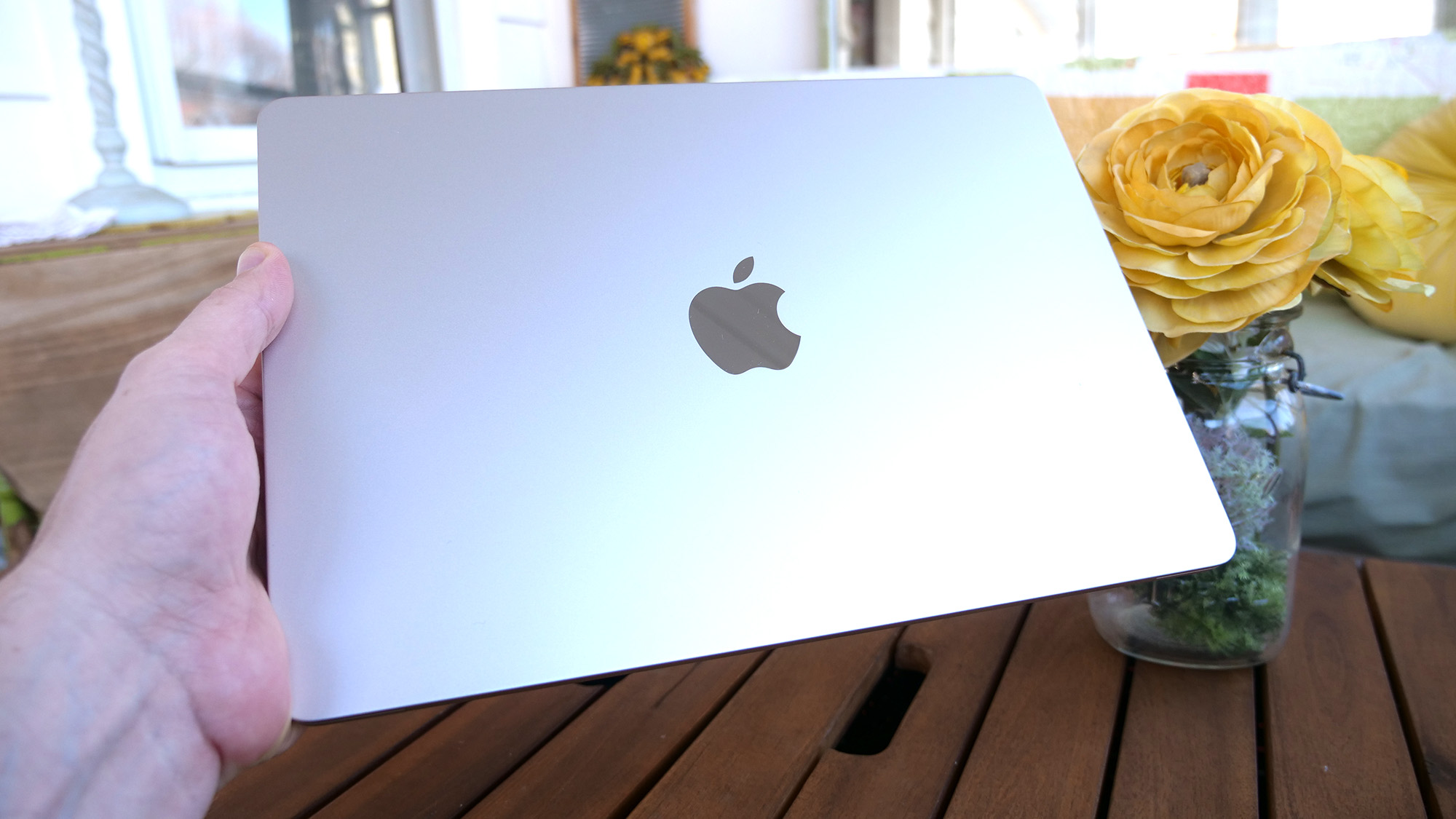
Apple's MacBook Air 13 M3 has multiple configuration options. Starting at $1,099, the base MacBook Air 13 comes with an 8-core M3 processor and an 8-core M3 GPU, 8GB of unified memory, 256GB of storage, and a 13.6-inch Liquid Retina display. Upgrading the storage to a 512GB SSD costs $1,299, and an upgrade to the 10-core M3 GPU and 16GB of unified memory costs $1,499.
You can also custom-build a MacBook Air 13 M3 to your specifications. For $2,299, you get an Apple MacBook Air 13 with an 8-core M3 processor, 10-core M3 GPU, 24GB of unified memory, a 2TB SSD, and a 13.6-inch Liquid Retina display.
The Zenbook S 14, however, has only one configuration option available. For $1,499, you get an Intel Core Ultra 7 258V processor, Intel Arc integrated graphics, 32GB of RAM, a 1TB SSD, and a 14-inch OLED display panel.
Stay in the know with Laptop Mag
Get our in-depth reviews, helpful tips, great deals, and the biggest news stories delivered to your inbox.
The MacBook Air has a lower starting point and more configuration options. However, if you try to spec out a MacBook Air to match the Zenbook, you're left with a $1,899 laptop with only 24GB of memory compared to the Zenbook, which offers 32GB of RAM at a much lower cost.
Winner: Asus Zenbook S 14
Asus Zenbook S 14 vs Apple MacBook Air 13 (M3): Design
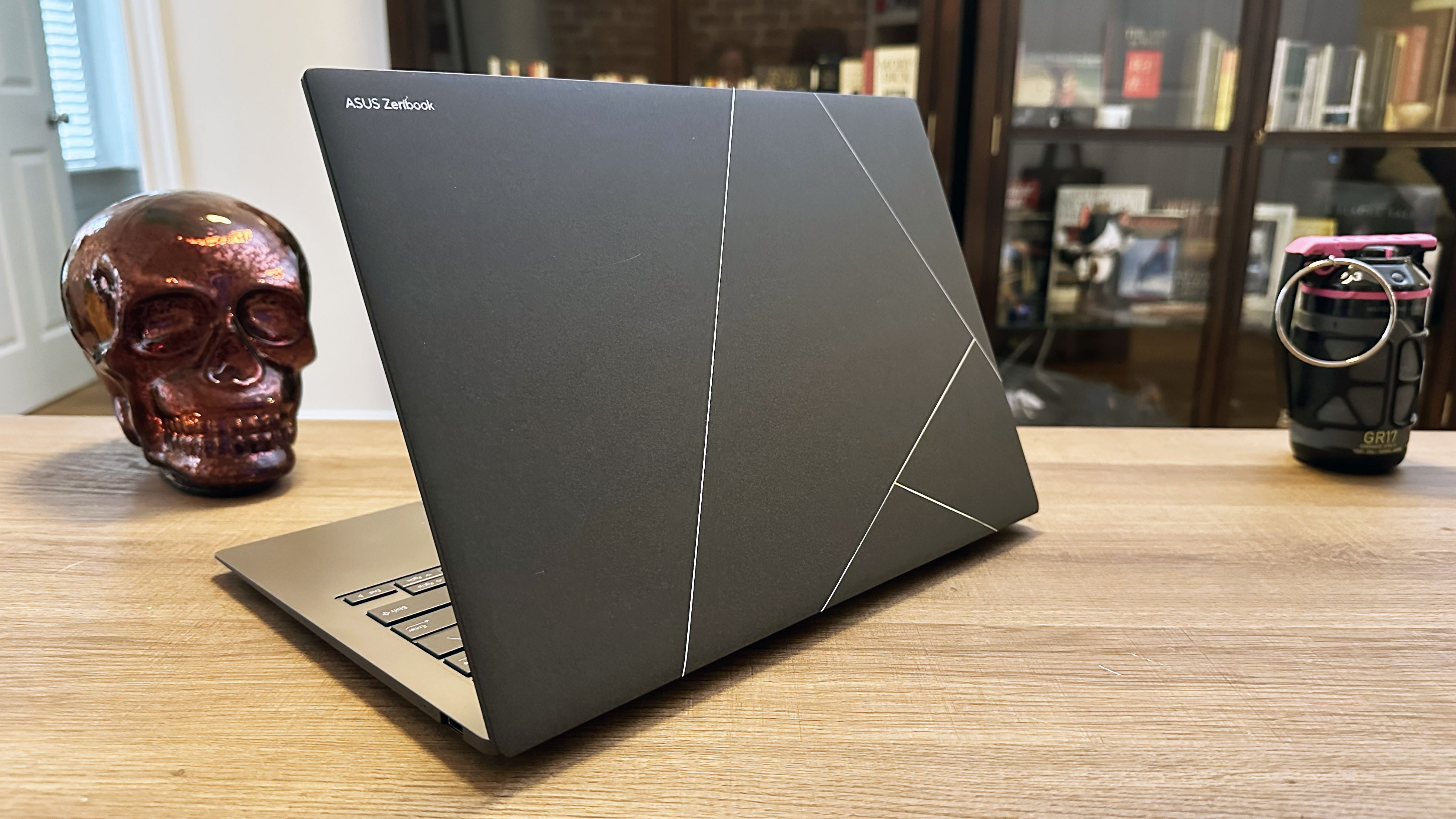
Both the Apple MacBook Air 13 M3 and Asus Zenbook S 14 are light and thin laptops with aluminum alloy chassis.
The MacBook Air 13 M3 is built with 50% recycled materials, including 100% recycled aluminum in the enclosure. It features the classic rounded-edge MacBook style and comes in four colors: Silver, Starlight, Space Gray, and Midnight.
The Zenbook S 14 features a Ceraluminum chassis for industry-grade strength, scratch resistance, and lightness. The Zenbook S 14 meets the MIL-STD 810H military standards for durability. It's got the new Zenbook S styling with an oversized Zenbook logo etched into the top cover panel, and comes in two colors: Scandinavian White and Zumaia Gray.
| Laptop | Dimensions | Weight |
|---|---|---|
| Asus Zenbook S 14 (Intel Core Ultra 7 258V) | 12.22 x 8.45 x 0.47~0.51 inches | 2.6 pounds |
| Apple MacBook Air 13 (M3) | 11.97 x 8.46 x 0.44 inches | 2.68 pounds |
The two laptops weigh nearly the same, though the MacBook Air 13 M3 is slightly heavier, weighing 2.68 pounds compared to the Zenbook's 2.6 pounds. But that difference in weight is negligible.
The MacBook Air 13 measures 11.97 x 8.46 x 0.44 inches, which is a bit thinner than the Zenbook, which measures 12.22 x 8.45 x 0.47~0.51 inches.
Ultimately, both are incredibly light and thin laptops, so the design choice comes down to aesthetics. The MacBook features that iconic Apple chassis, while the Zenbook S 14 has a nice contrasting Zenbook logo on the Ceraluminum chassis for a slightly edgier feel. But it comes down to personal choice.
Winner: Draw
Asus Zenbook S 14 vs Apple MacBook Air 13 (M3): Display
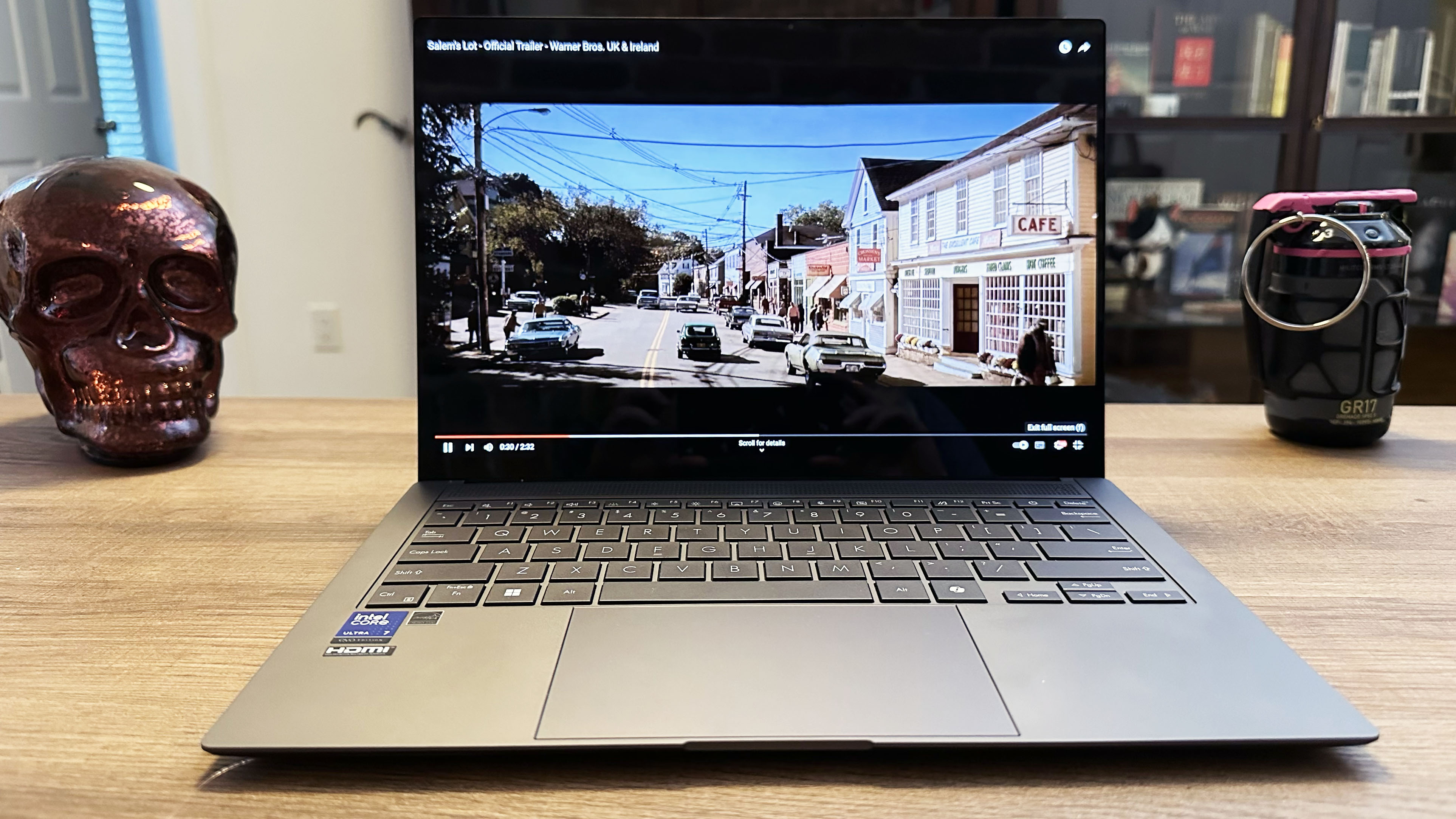
The Zenbook S 14 does have a slight edge here just based on hardware, as it has an OLED display compared to the LED-backlit LCD Liquid Retina display on the MacBook Air. However, some of Apple's Liquid Retina displays can put up a solid fight on brightness and color accuracy compared to OLED panels, so it's not an open and shut case.
When it comes to the DCI-P3 color gamut, the Zenbook S 14 takes the win, covering 82% of the DCI-P3 color space with an accuracy of 0.21. The MacBook Air covers 77.8% of the DCI-P3 gamut with an accuracy of 0.21. So, while both displays are pretty accurate in their portrayal of color, the Zenbook S 14's glossy OLED panel is more colorful.
| Laptop | Display average brightness (nits) | DCI-P3 color gamut (%) | Delta-E color accuracy (smaller number is better) |
|---|---|---|---|
| Asus Zenbook S 14 (Intel Core Ultra 7 258V) | 342 | 82.00% | 0.21 |
| Apple MacBook Air 13 (M3) | 476 | 77.80% | 0.21 |
The MacBook Air 13's Liquid Retina display wins on brightness, with an average peak brightness of 476 nits compared to the Zenbook S 14's 342 nits.
But 342 nits is more than enough brightness for most uses and cuts through most glare. The MacBook Air also has a glossy display panel and suffers some glare even with a higher brightness average. You can work around screen glare, but it's hard to work around color gamut coverage. So, the Zenbook takes the win.
Winner: Asus Zenbook S 14
Asus Zenbook S 14 vs Apple MacBook Air 13 (M3): Performance
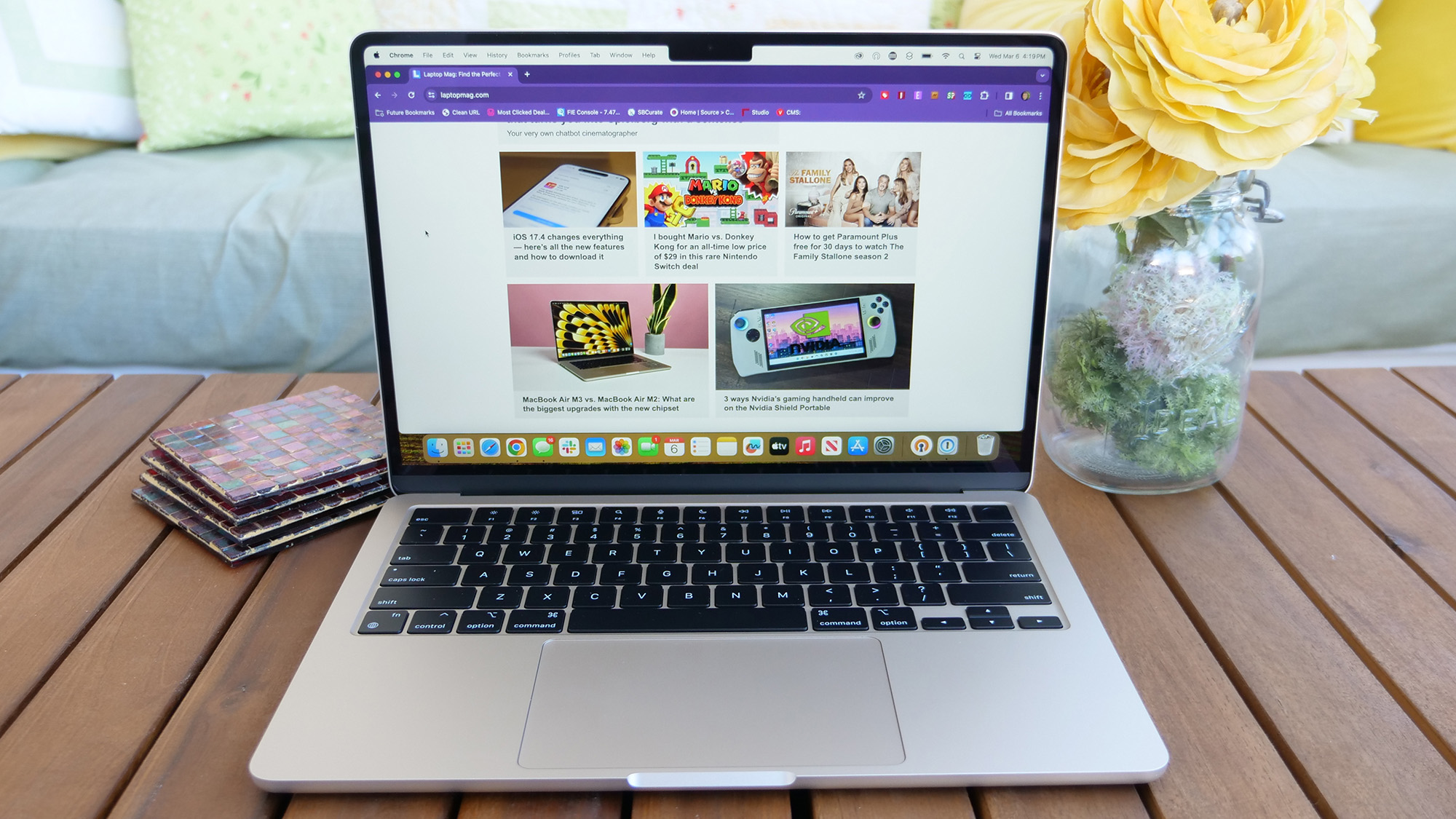
While the Apple MacBook Air 13 M3 and Asus Zenbook S 14 have the raw computing power to handle most people's tasks with aplomb, one laptop has a clear edge on performance across multiple benchmark metrics.
On the Geekbench 6 cross-platform CPU benchmark, the Apple MacBook Air has a single-core average of 3,082 and a multicore average of 12,087. The Zenbook S 14 has a single-core average of 2,751 and a multicore average of 11,157. Both laptops are running an 8-core CPU, the M3 chip just has a little more power on both single-core and multiple core tasks.
| Laptop | Geekbench 6 single-core | Geekbench 6 multicore | Handbrake time | BlackMagic Disk Speed Test (Write) | BlackMagic Disk Speed Test (Read) |
|---|---|---|---|---|---|
| Asus Zenbook S 14 (Intel Core Ultra 7 258V) | 2,751 | 11,157 | 08:30 | 2,513 | 2,590 |
| Apple MacBook Air 13 (M3) | 3,082 | 12,087 | 07:19 | 3,058 | 3,030 |
On the Handbrake video encoding test, which compresses the 4K version of "Tears of Steel" to a 1080p 30fps format, the MacBook Air took 7 minutes and 19 seconds to complete the tasks, while the Zenbook took 8:30. Neither of these speeds is winning a record for us at Laptop Mag, but the MacBook Air's video encoding engine has a definite edge over the Zenbook.
Lastly, on the BlackMagic Disk Speed Test, the MacBook Air has the lead with a write speed of 3,058 MBps and a read speed of 3,030 MBps. The Zenbook has a write speed of 2,513 MBps and a read speed of 2,590 MBps.
While both laptops can handle the needs of most users, the MacBook is the more powerful computer when left up to the benchmarks.
Winner: Apple MacBook Air 13 (M3)
Asus Zenbook S 14 vs Apple MacBook Air 13 (M3): Gaming and graphics
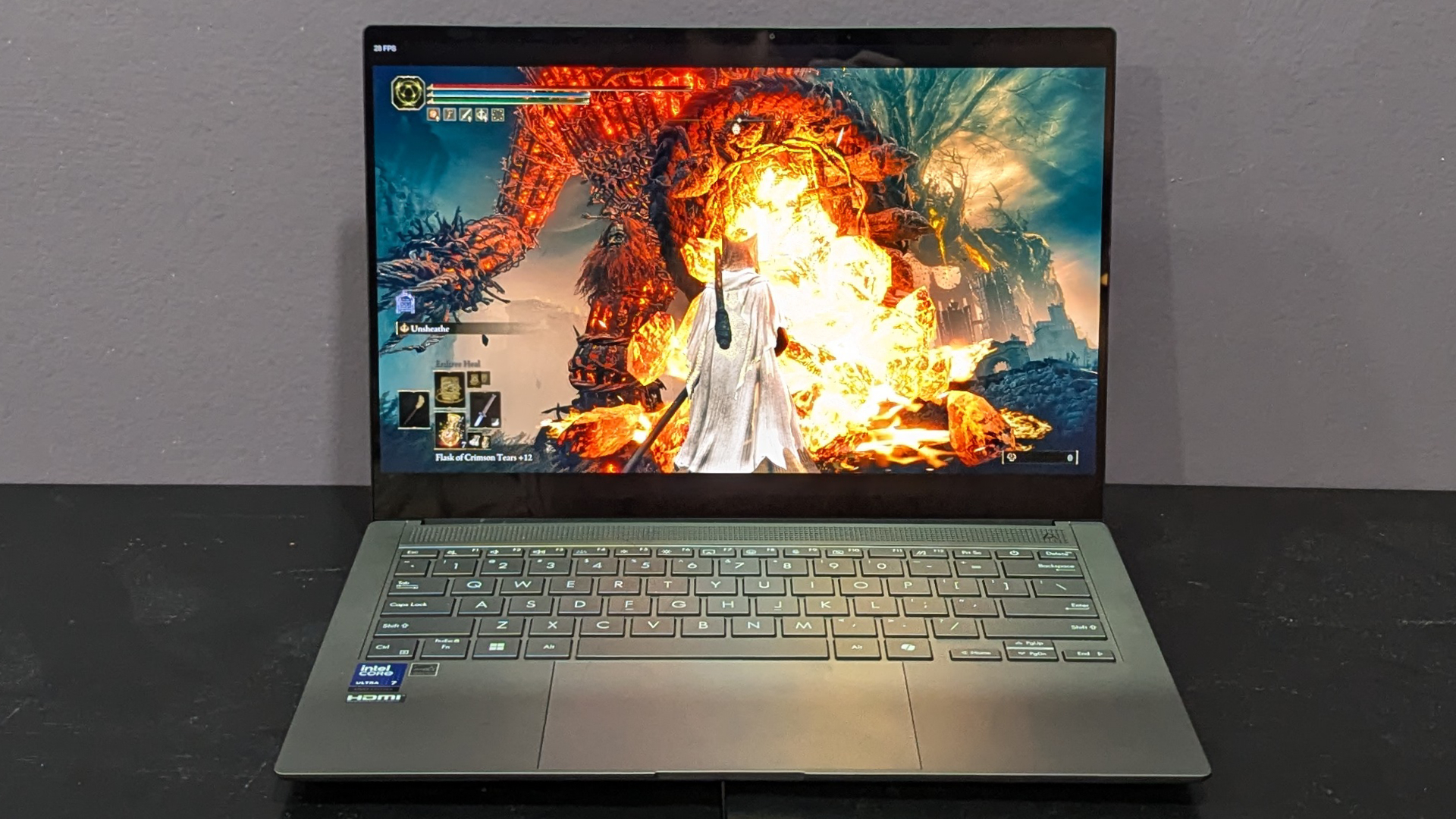
Neither the Asus Zenbook S 14 nor the Apple MacBook Air 13 are laptops designed for gaming. If you're going to be doing much more than the occasional puzzle game or indie title, you'll get more mileage out of a dedicated gaming laptop.
But if you need a laptop that offers a bit of everything, both the Zenbook and the MacBook Air can offer decent gaming performance because they have integrated GPUs. We tested the Apple MacBook Air 13 M3 with a 10-core GPU against the Asus Zenbook S 14, which has an Intel Arc Graphics 140V GPU.
While we didn't evaluate the MacBook Air's gaming performance during our review process, we did benchmark both laptops on two different gaming benchmarks.
| Laptop | Civilization VI: Gathering Storm (1080p) | Civilization VI: Gathering Storm (native) | Shadow of the Tomb Raider (1080p) | Shadow of the Tomb Raider (native) |
|---|---|---|---|---|
| Asus Zenbook S 14 (Intel Core Ultra 7 258V) | 48 FPS | 38 FPS | 19 FPS | 9 FPS |
| Apple MacBook Air 13 (M3) | 41 FPS | 35 FPS | 25 FPS | 12 FPS |
On the Sid Meier's Civilization VI: Gathering Storm graphics benchmark on Medium settings at 1080p, the Zenbook S 14 had the edge with an average frame rate of 48fps, while the MacBook Air was a bit slower with a frame rate average of 41fps. However, Civ VI can be a more CPU-heavy game, so its frame rates aren't always the most accurate portrayal of pure gaming performance.
On the Shadow of the Tomb Raider benchmark on the Highest graphics settings, the MacBook Air had the edge with a frame rate average of 25fps compared to the Zenbook's 19fps. While you wouldn't likely game on either laptop at such high graphics settings, this is a solid illustration of the M3 10-core GPU's graphics performance.
So, on a pure GPU metric, the M3 actually has the edge in gaming.
Winner: Apple MacBook Air 13 M3
Asus Zenbook S 14 vs Apple MacBook Air 13 (M3): Battery life
Apple's battery life crown has been stolen away from it by a few recent Dell XPS 13s, both the XPS 13 9345 Snapdragon X Elite and XPS 13 9350 Lunar Lake models.
However, the Zenbook S 14 didn't last 18.5 hours on the Laptop Mag battery test like its Dell counterpart. The Zenbook S 14 lasted 13 hours and 51 minutes on the Laptop Mag web surfing battery test, over an hour shorter than the MacBook Air 13's 15:13 time. So while both are strong results, this one is a clear win for the MacBook Air.
| Laptop | Battery life (web surfing hh:mm) |
|---|---|
| Asus Zenbook S 14 (Intel Core Ultra 7 258V) | 13:51 |
| Apple MacBook Air 13 (M3) | 15:13 |
Winner: Apple MacBook Air 13 (M3)
Bottom line
The MacBook Air 13 M3 has better gaming and general performance benchmarks and better battery life than the Zenbook S 14. But the Zenbook is more economical and has a better display.
While your ultimate decision may depend on your preference of operating system or your individual needs, the MacBook is the more powerful laptop. I usually look for a good balance of performance and battery rather than display options and pricing, but everyone has different needs.
That said, based on this face-off, the Apple MacBook Air 13 M3 takes the win.
Winner: Apple MacBook Air 13 M3

A former lab gremlin for Tom's Guide, Laptop Mag, Tom's Hardware, and TechRadar; Madeline has escaped the labs to join Laptop Mag as a Staff Writer. With over a decade of experience writing about tech and gaming, she may actually know a thing or two. Sometimes. When she isn't writing about the latest laptops and AI software, Madeline likes to throw herself into the ocean as a PADI scuba diving instructor and underwater photography enthusiast.
